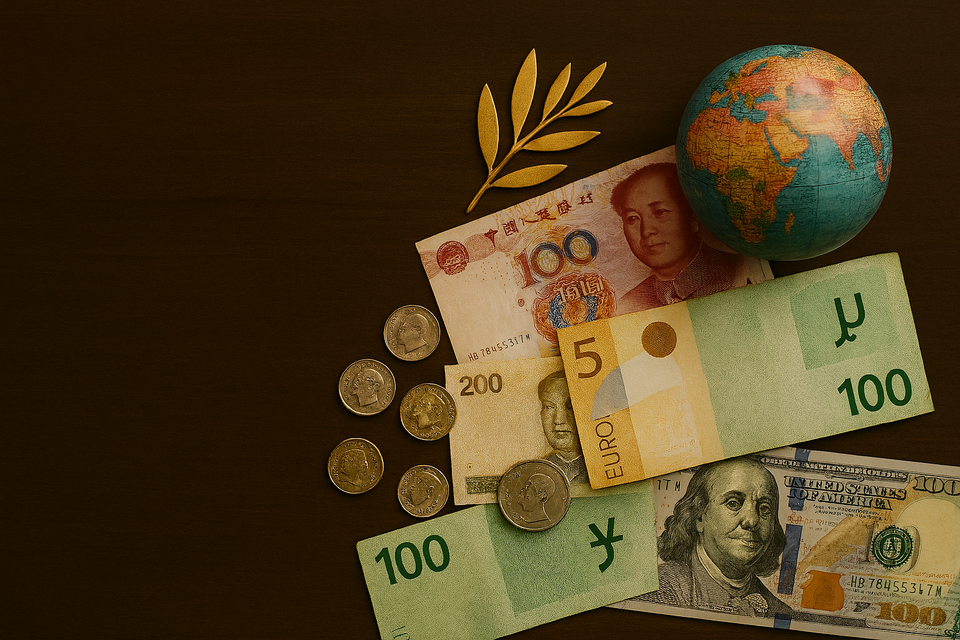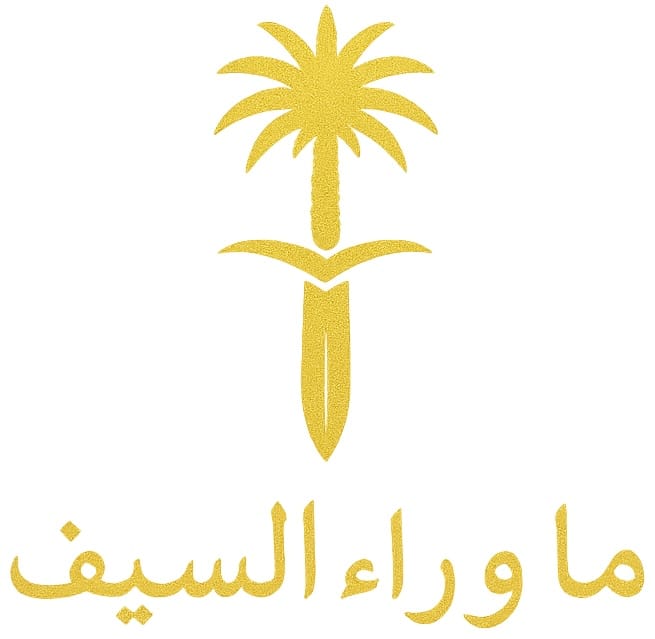White Paper - Currency as Public Diplomacy: Soft Power in Your Pocket

By Nora Alzahid
Prepared for: Ministries of Foreign Affairs, Public Diplomacy Units, Multilateral Strategy Teams, and Financial Institutions
Executive Summary
Currency is more than a medium of exchange; it is a nation’s most portable ambassador. Embossed with cultural icons, national ideals, and economic aspirations, money carries not only purchasing power but symbolic capital. As states increasingly compete for influence in the soft power arena, currency has emerged as an understated yet potent vehicle for public diplomacy. This white paper explores how nations from ancient empires to today’s digital innovators leverage currency design, distribution, and symbolism to craft compelling narratives, project national identity, and build diplomatic capital.
I. Currency as a National Narrative
Currency visually communicates a state’s historical memory, ideological foundation, and cultural pride. From Roman denarii to modern blockchain tokens, money has been used to construct political legitimacy and emotional resonance.
- Cultural icons: National poets, scholars, rulers, and landmarks reflect a country’s values and civilizational contributions.
- Symbolic messaging: Imagery such as peace doves, unity bridges, or female leaders can signal inclusivity and reform.
- Cinematic currency: The U.S. dollar appears frequently in global media, embedding the idea of America as a world power.
Example 1: The redesign of the U.S. $20 bill to feature Harriet Tubman was globally recognized as a move toward racial and gender representation, even though its release was delayed.
Example 2: The Bank of Korea issued a ₩2,000 commemorative note for the 2018 PyeongChang Winter Olympics, featuring athletes and traditional art. It blended modern identity with heritage, and became a collector’s item, enhancing South Korea’s cultural visibility.
II. Saudi Arabia and the Global Introduction of the Riyal Symbol (﷼)
Saudi Arabia’s official adoption and Unicode registration of the riyal symbol (﷼) marked a subtle yet significant step in cultural assertion and digital visibility.
- Standardization: Integration into Unicode ensures compatibility across keyboards, fintech platforms, and international commerce systems.
- Cultural assertion: Unlike the abbreviation SAR, the Arabic-script ﷼ visually reflects Saudi heritage.
- Modernization and confidence: It signals Saudi Arabia’s emergence as a technologically integrated and globally engaged economy.
This move aligns with the broader Vision 2030 narrative of rooted transformation and promotes global familiarity with Saudi currency.
III. Commemorative Coins as Diplomatic Gifts
Commemorative coinage has long functioned as a tool of statecraft, celebration, and bilateral signaling.
- Historical precedent: Roman emperors minted coins to solidify alliances or assert shared victory.
- Modern parallels: Canada’s Vimy Ridge coin, China’s Panda coin, and EU €2 commemoratives mark key national or diplomatic milestones.
Strategic opportunity: Saudi Arabia can issue:
- Coins for Vision 2030 milestones (e.g., NEOM launches, cultural preservation projects)
- Diplomatic coinage for bilateral anniversaries and multilateral events (e.g., Islamic summits)
These artifacts can become soft power symbols distributed by embassies, cultural attachés, and multilateral envoys.
IV. Currency Stability and National Image
The strength and reliability of a currency reflect a nation’s institutional trust, macroeconomic management, and geopolitical stature.
- Swiss Franc: Associated with neutrality, safety, and reliability.
- U.S. Dollar: Its hegemony is rooted in perceived American stability and global presence.
- Euro: Serves as a symbol of European integration and rules-based cooperation.
For Gulf countries, including Saudi Arabia, currency pegs have ensured predictability but the riyal can become more than a tool of stability; it can also be a symbol of reform, resilience, and future-oriented vision.
V. Monetary Influence in Strategic Aid
Currency diplomacy is increasingly linked to development finance, regional trade, and debt management strategies.
- China: Pushes the yuan in Africa, Central Asia, and BRI countries to promote economic dependence and currency adoption.
- U.S.: Through dollar-based loans, trade credits, and multilateral financial leverage.
- Europe: Provides development aid in euros tied to regulatory and human rights frameworks.
Saudi Prospects:
- Expand riyal-denominated development loans and grants, particularly in South Asia and the African Union.
- Brand humanitarian aid in riyals through KSrelief to build trust and visibility.
- Explore regional currency swaps and Gulf-focused trade corridors to increase the currency’s functional footprint.
VI. Numismatics and Cultural Engagement
Currency collecting (numismatics) offers a low-cost, high-impact method for countries to build emotional and cultural resonance.
- Outreach value: Coins featuring UNESCO sites, historical calligraphy, or cultural motifs generate curiosity and soft engagement.
- Educational potential: Used in school kits, museum exhibits, or exchange programs, currency becomes a storytelling medium.
Saudi Concept: Launch a "Riyal Heritage Series" featuring key cultural, religious, and geographic symbols, along with parallel digital NFTs, to be distributed at World Expos, UN Week, and cultural festivals.
VII. Currency in Pop Culture and Emerging Tech
Currency appears not only in wallets but in art, film, protests, and now, in blockchain.
- U.S. dollar: Referenced in global cinema and music as a symbol of power and influence.
- Digital Yuan: Piloted in the 2022 Beijing Olympics as a soft tech showcase.
- NFT Diplomacy: UAE released blockchain-backed postal stamps; Saudi Arabia issued NFTs at a UN tourism event.
Forward-Looking Vision: Saudi Arabia can continue leading in “digital riyal diplomacy” by:
- Releasing cultural NFTs tied to Vision 2030 milestones
- Embedding digital riyals into education kits for the diaspora
- Creating a symbolic “e-riyal” wallet to be gifted at diplomatic events
VIII. Activating SAIP for Currency-Based Public Diplomacy
The Saudi Authority for Intellectual Property (SAIP) represents a strategic asset in elevating the riyal as a protected and globally recognized soft power tool. By safeguarding the artistic and symbolic elements embedded in Saudi currency from calligraphic designs to commemorative motifs, SAIP can reinforce national branding and ensure cultural authenticity.
- Protection of visual assets: Register Riyal imagery and commemorative designs as national intellectual property to prevent unauthorized replication or misuse.
- Global IP partnerships: Collaborate with international IP offices and cultural institutions to position Saudi currency designs as emblematic exports of national identity.
- Cultural heritage alignment: Work with the Ministry of Culture and SAMA to curate a formal archive of Saudi currency as intangible heritage, supporting both domestic pride and global recognition.
In doing so, SAIP can help transform the riyal into a curated and diplomatically protected cultural asset.
IX. Integrating Currency Diplomacy into the Digital Wallet Frontier
As global transactions migrate to contactless platforms, mobile wallets like Apple Pay and STC Pay offer new avenues for embedding cultural narratives into everyday financial life. Saudi Arabia is well-positioned to pioneer the integration of digital currency with public diplomacy goals.
- e-Riyal as cultural storytelling: Issue symbolic digital tokens tied to Vision 2030, national events, or heritage sites, distributed through loyalty programs or cultural campaigns.
- Fintech partnerships: Collaborate with leading payment platforms to incorporate Saudi cultural motifs and soft power messaging into user experiences.
- Narrative innovation: Make digital payments not just functional but expressive, a medium for cultural branding, emotional resonance, and global outreach.
This approach transforms fintech into a vehicle for diplomacy, turning daily transactions into micro-expressions of national identity.
X. The Risks and Limitations of Currency Diplomacy
While currency holds potential as a soft power tool, it is not without limitations and must be deployed with caution.
- Political sensitivity: Designs perceived as ideological or territorial can trigger diplomatic backlash or domestic discontent.
- Economic volatility: A declining currency may erode trust and weaken the symbolic credibility it aims to project.
- Performative risk: Overuse of symbolic gestures without substantive policy backing can lead to superficial diplomacy and reputational damage.
For Saudi Arabia and other emerging players in currency diplomacy, success depends on aligning aesthetic innovation with policy coherence, cultural sensitivity, and long-term strategic intent.
Conclusion: Diplomacy in the Palm of Your Hand
Currency is not merely transactional; it is transformational. Whether embossed on coins, embedded in mobile wallets, or embedded in popular memory through art and media, money can become a tool of influence. For Saudi Arabia, the riyal, both physical and digital, offers a culturally grounded, globally adaptable soft power asset. In a world where diplomacy is increasingly about identity, memory, and emotion, currency is a quiet yet persistent messenger of who we are.
Strategic Recommendations for Saudi Arabia
- Design Vision 2030-themed currency: Feature transformation icons like NEOM, AlUla, and cultural symbols on coins and banknotes.
- Promote the Riyal symbol (﷼) globally: Ensure integration into fintech platforms, mobile keyboards, digital trading tools, and financial journalism.
- Launch a Numismatic Diplomacy Program: Issue limited-edition coins and NFTs for major diplomatic events.
- Use coins as diplomatic gifts: Distribute curated coin sets to dignitaries, UN representatives, and cultural partners.
- Educate through currency: Incorporate riyals into school kits, museums, and cultural programming.
- Leverage digital currency as storytelling: Develop symbolic “e-riyal” tokens for cultural diplomacy, Vision 2030 achievements, and global outreach.
- Expand riyal-based aid and trade: Integrate the riyal into development finance as a regional identity asset.
- Explore fintech partnerships for cultural engagement: Collaborate with Apple Pay, STC Pay, and similar platforms to make Saudi currency a soft power interface.
- Empower SAIP to protect currency designs: Register Riyal imagery as national IP and use it to reinforce Saudi brand identity abroad.
